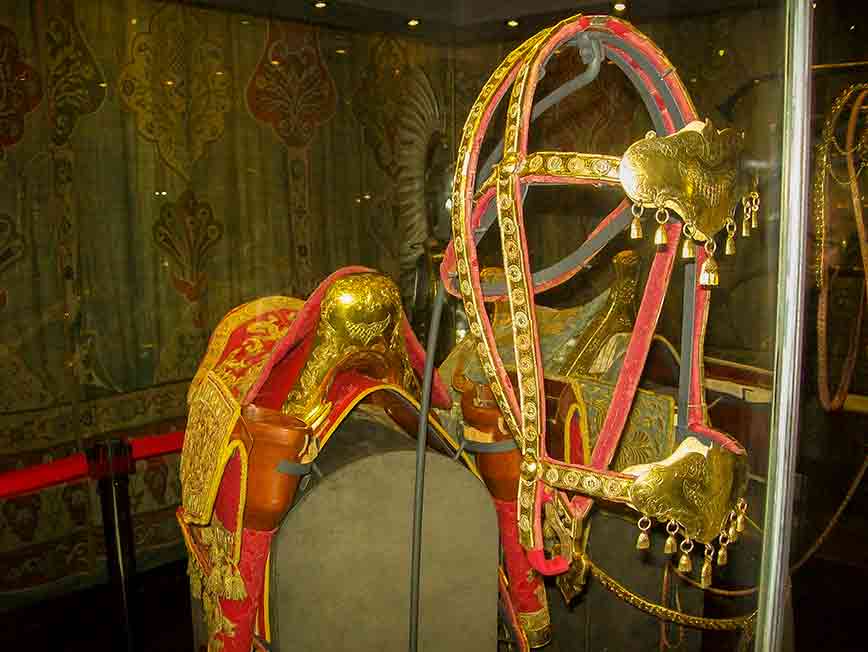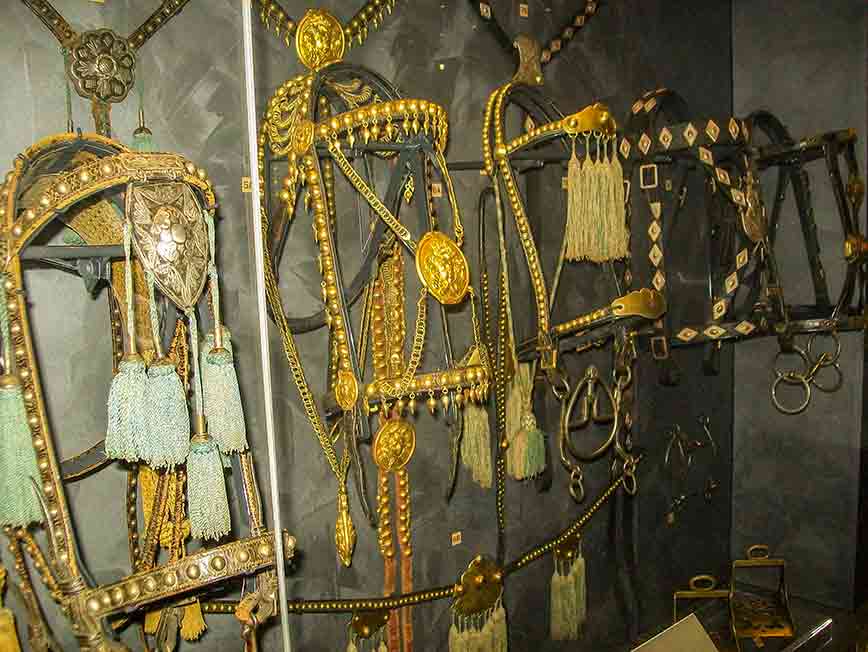The first use of the bridle, i.e. a headstall with a bit, took place in 3500—3000 BC by the Botai culture inhabiting the territory of Northern Kazakhstan. This is evidenced by the local archaeological traces in the form of mechanical damage left on the bones in the toothless part of the horse's jaws. The editors of Kuryer Polski were invited to a historical lecture on the horse harness to Tarnów, where we could admire the most beautiful exhibits gathered in the local Tower.

Who Was the First to Use the Bit?
It is believed that the Kazakhstani population at the time used a bit which passed through the horse's jaw in the gap between the teeth. It was tied under the chin and continued to run into the reins. The American Indians called this type of briddle war–briddle, or racing–briddle. In antiquity, bitless bridles were also used, most likely they were used as the first in the beginning of horse domestication.
How Was the Bridle Made?
Stone Age people most often used ropes, bones, horn, or hardwood to make the bridle. The first bits made of metal appeared at the turn of the 12th and 13th centuries BC. Throughout the history of the use of the bit, from ancient times to the present day, various designs have been invented. This creativity developed mainly during the war, when fighting knights needed an appropriate solution that would give them easy control over the horse. The Hyksos (invaders of Egypt in around the 16th century BC) used bits with spiked rings already in the 18th century BC. They were touching the horse's cheeks so that with every twist they put pressure on them and caused the animal pain. Changes for the better were to come in 350 BC with Xenophon, now recognized as the founder of hypology. Through his own observations, he worked on getting to know the horse's psyche, he recommended working with the horse in harmony with its nature. Although horses began to be treated with a bit more sensitivity, they still had to serve as the main means of transport for humans.

These Animals Have Always Been Respected
In the course of wars and battles, there was no room for gentle handling of horses, even though these animals were highly respected. Many archaeological sources show medieval knights on steeds covered with armor, with a curb bit and an ordinary bit in their mouths. Medieval equestrianism did not differ much from the present day. They rode on a loose curb rein and the bits were only slightly tense. This proves the understanding of the sensitivity of the horse's mouth at the time. This form could change when the knight had a target to fight on the battlefield, when the horse had to make quick movements and turns.
Horses Serving in the Cavalry
In the cavalry the curb bit was considered the best. When the situation required it, the rider had to manage the horse and wield the weapon he had in his other hand at the same time. For this purpose, the bit that was used had to be reliable, so it was supposed to work much harder than a regular bit. The methods of working with horses and forcing the horse to react appropriately did not disappear, but it became a tradition. The horse always had to obey its master and make all the movements that its owner imposed on it. For this, the owner repaid it with good food, patting, and he often adorned its bridles with precious stones.
The editors of Kuryer Polski would like to thank the Tarnów Historical Society for the invitation to see the beautiful horse tacks.
Photos by the author.
Translation from Polish by Andrew Woźniewicz.



